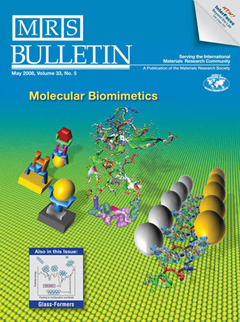Research Highlight #25:
Molecular Design of Inorganic-Binding Polypeptides
John Spencer Evans, Ram Samudrala, Tiffany R. Walsh, Ersin Emre Oren, Candan Tamerler and Mehmet Sarikaya;
Materials Science & Engineering and Microbiology, University of Washington

Controlled binding and assembly of peptides onto inorganic substrates is at the core of bionanotechnology and biological-materials engineering. Peptides offer several unique advantages for developing future inorganic materials and systems. First, engineered polypeptides can molecularly recognize inorganic surfaces that are distinguishable by shape, crystallography, mineralogy, and chemistry. Second, polypeptides are capable of self-assembly on specific material surfaces leading to addressable molecular architectures. Finally, genetically engineered peptides offer multiple strategies for their functional modification. In this article, we summarize the details and mechanisms involved in combinatorial-polypeptide sequence selection and inorganic-material recognition and affinity, and outline experimental and theoretical approaches and concepts that will help advance this emerging field.
Contact M. Sarikaya, for more details, sarikaya@compbio.washington.edu .
MRS Bulletin, 33 504-510 (2008).
MRS Bulletin, 33 514-518 (2008).



